Last year’s stacked lineup of games for the Game Awards had us thinking: What was the best year in gaming? As part of our series on determining gaming’s best year, we’re putting together an article on each year, charting the major releases and developments of the year, and talking about both their impact and what made them great.

The Year: 1994
This is as good as 16-bit gaming is ever going to get. The year is 1994. The fifth generation of video game consoles is on the horizon, and after two years of vicious back-and-forth, the console wars between Sega and Nintendo are starting to cool. Sega has been focusing on their next generation hardware launch, while Nintendo’s Ultra 64 is still two years away so they’re putting more time and energy into the Super Nintendo/Famicom. And in the background Sony, still working on the PlayStation after being spurned by Nintendo three years prior, has been waiting to launch their home console and change everything. The result is that Nintendo would handily win the console wars in 1994 with an all-time banger slate of SNES titles and continue the trend into 1995, but ultimately find itself two years behind in the fifth generation console race.
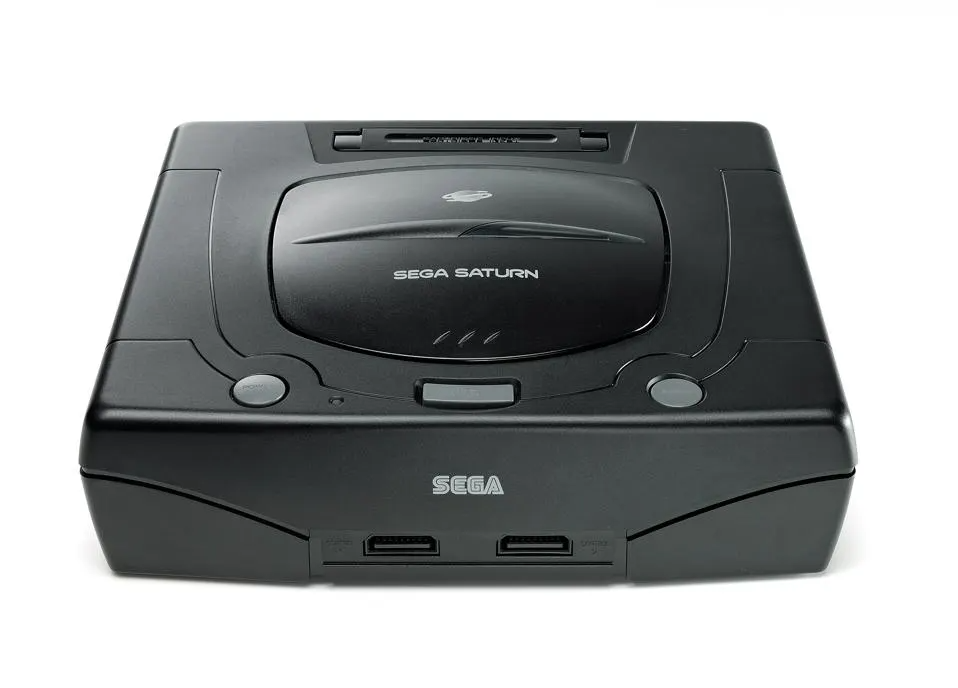
The Sega Saturn
Through the first three years of the console wars Sega had been regularly crushing it in arcades and beating Nintendo in markets outside of Japan. The company knew it would have to build a new console at some point, feeling pressure from other next-gen systems like the Atari Jaguar and the 3DO, as well as market contraction which had begun to occur as growth for console market penetration slowed. Despite a pair of Genesis add-ons intended to hold gamers over – the Sega CD and 32X – Sega’s true entry into the fifth generation of consoles was the Sega Saturn, released in Japan in November, 1994.
Sega had become known as a pioneer of 3D graphics at the arcades thanks to its Sega Model 1 board and games built on it like Virtua Racing and Virtua Fighter. Despite this, the Saturn was not designed for 3D graphics initially – the hardware simply wasn’t strong enough to render fully 3D environments and the company had initially chosen to focus on 2D graphics processing. When Sega received word of the Sony PlayStation’s technical specs in early 1994, they attempted to fix this by adding another video processor to the system’s hardware, giving it better texture mapping for its 3D models. This is something the Saturn desperately needed – Sony had accurately predict that polygonal 3D graphics were the future – but was also indicative of the system’s design problems.
The Saturn launched with a port of Virtua Fighter, Tama, WanChai Connection, Myst, and Mahjong Gokuu Tenjiku, and two weeks later would receive support in the form of The Mansion of Hidden Souls, Gale Racer, and Clockwork Knight. Of these, Clockwork Knight and Virtua Fighter were the strongest titles, and the home port of Virtua Fighter immediately became the system’s best seller and the reason to own the console. Sega’s Saturn would end up outselling the PlayStation in those first two months.
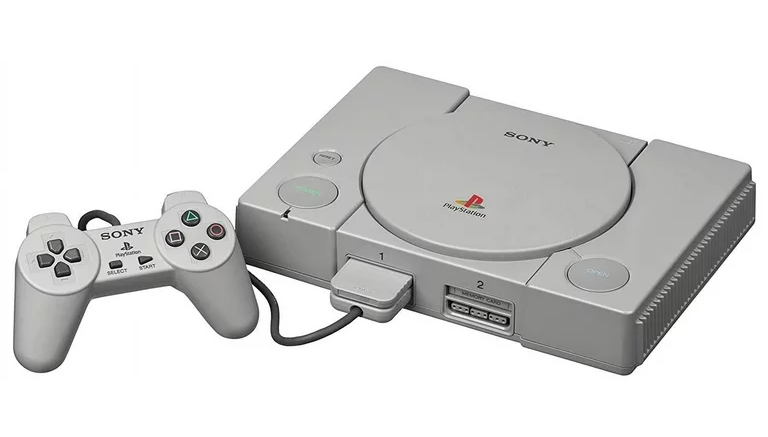
The Sony PlayStation
After Nintendo decided to publicly humiliate Sony at CES in 1991, Ken Kutaragi convinced them to stay in the game and develop their PlayStation as a standalone console. Sony’s new, PlayStation X (PSX) console focused heavily on 3D graphics, to the point that the console lacks a dedicated 2D graphics processor, but was incredibly easy to develop for. In similar fashion to the Saturn, the PlayStation also used optical discs for its games, giving games a much larger capacity, cheaper cost, and faster manufacturing time, allowing for multiple fast production runs, making them a much more appealing format for third-party developers.
The Sony PlayStation launched in Japan in December 1994 with a lineup of Ridge Racer, Crime Crackers, two Mahjong titles, Nekketsu Oyako, Parodius, A IV Evolution: A Ressha de Ikou 4, and Tama. Of these, Ridge Racer was the biggest selling point and the game which would help define the PlayStation as the platform for racing games for a decade.
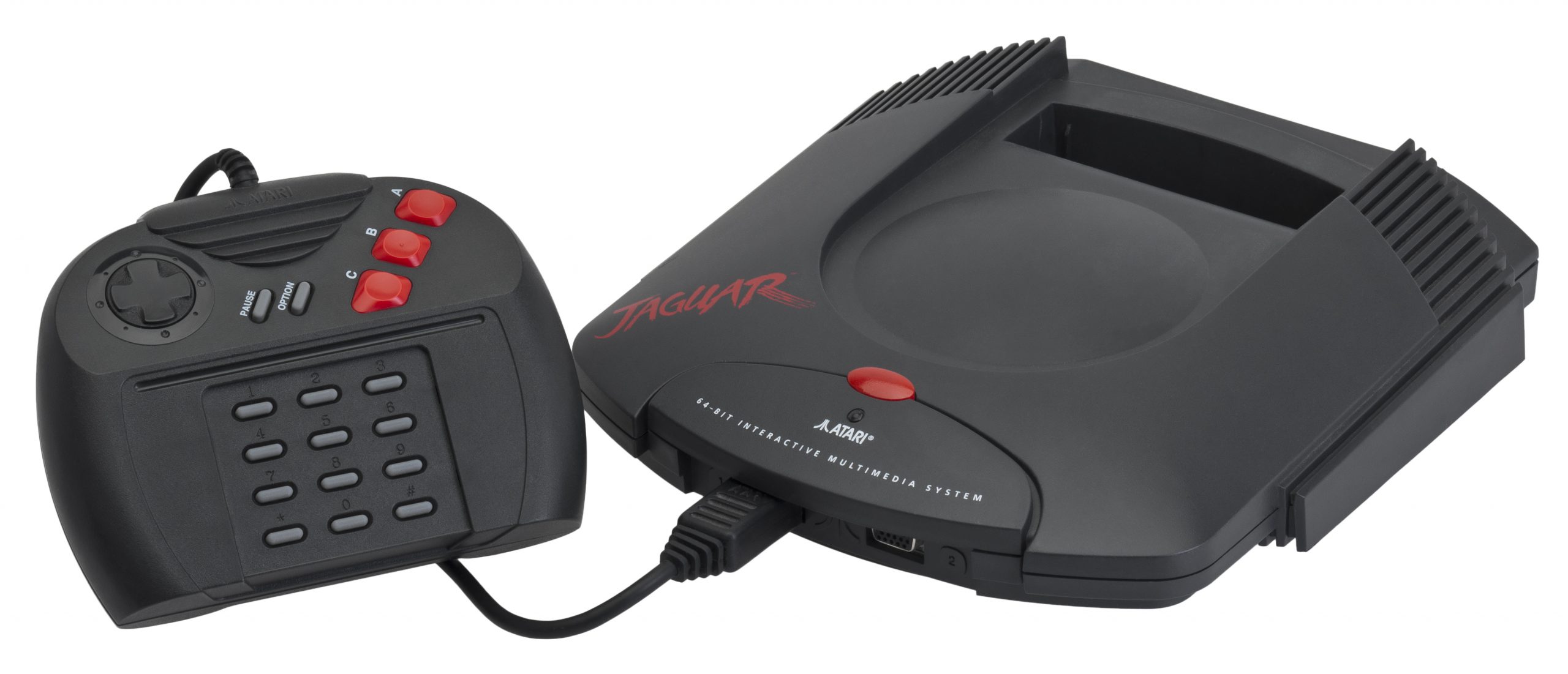
Atari Jaguar
In the early nineties, Atari was struggling. Their prior console, the Atari 7800, sold a few million units after its release in 1986 but was at best an afterthought compared to the NES, mostly featuring ports of games from the golden age of arcades. On top of that, the company had to eat the losing end of a lawsuit from Nintendo over stealing the code for its 10NES copy protection chips. In the late 80s, Atari had planned and begun development on two consoles, the 32-bit Panther and the more powerful Jaguar. When development on the Jaguar moved faster than expected, the company dropped the Panther project and went all in on the Jaguar, marketed as the first 64-bit console.
The Jaguar launched in the US In November, 1993 at the very competitive price of $249.99 in two test markets, then moved to a nationwide release six months later. The Jaguar’s launch line-up was pretty terrible, and the console struggled early on. There would eventually be some decent games for it – Alien vs. Predator released in October 1994 as a first-person shooter in which players could play an Alien, Predator, or Colonial Marine and it’s probably the console’s best exclusive. Ultimately the Jaguar had too much going against it: A bad controller, hardware that wasn’t intended for 3d gaming and relied on cartridges, and a complete lack of good first party titles or third-party support, ultimately dooming it to a quick demise. Atari discontinued the Jaguar in 1996.
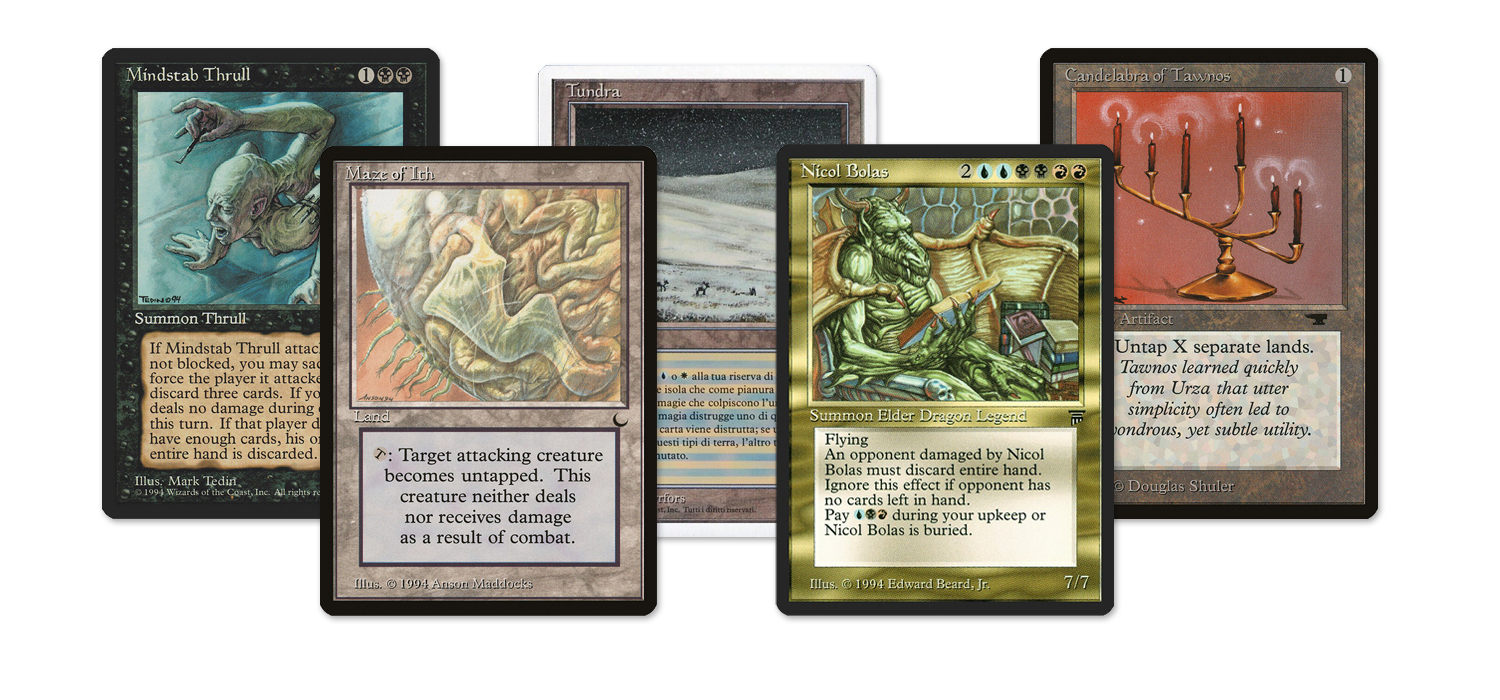
Magic Continues to Expand
Magic: the Gathering had a stellar introduction in 1993, immediately selling out of its first, second and third runs. Late in the year Wizards of the Coast printed the game’s first expansion, Arabian Nights. In 1994 Magic upped the ante, adding four expansions and an entirely new base edition to the game.
Revised Edition
After the wild success of its initial print runs, dubbed Alpha, Beta, and Unlimited, Wizards of the Coast printed a new base edition of the game, Revised Edition, which continued the white border trend of Unlimited but changed up the card pool. Revised dropped a number of cards from the original set, most notably the ultra powerful cards which would come to define the game’s limited formats, such as Black Lotus, Ancestral Recall, Timetwister, and the five Moxen, and replaced them with a selection of cards from the Arabian Nights and Antiquities expansions. This would essentially kick off the practice of rotating cards in and out of print, fueling collector interest in older, hard-to-get cards. By the end of 1994, a single Black Lotus was already going for around $200. In addition to removing cards which were too powerful, Revised edition also did away with the demons and devils introduced in the game’s first editions, to once again avoid the lingering effects of America’s Satanic Panic.
The Expansions
Wizards of the Coast released four expansions for Magic in 1994, at a breakneck pace – although the set sizes varied greatly.
- Antiquities released in March 1994 and focused on artifacts and the first real Magic storyline – a war between the artificer brothers Urza and Mishra. The story of the war was told across cards, intended to give players the feeling of being historians digging up the past.
- Legends released in June 1994 and introduced multicolor (gold) cards to the game as well as the concept of Legendary permanents (creatures and lands), and poison counters, and introduced the common/uncommon/rare system of card rarity. Like Antiquities, Legends had a number of cards which were bonkers powerful.
- The Dark released in August 1994 and was arguably Magic’s first horror set. Like Antiquities, The Dark went heavy on story told through the cards, telling the tale of Dominaria falling into ruin and paranoia. It’s not a particularly powerful set – Magic designers had started to rein in their impulses by this point – but had some gems and is carried by some very sick art design. [For example, The Fallen remains iconic even today. –Ed.]
- Fallen Empires released in November 1994 and was basically Magic’s first bad set. It had some okay cards but was pretty weak overall, and all of this was compounded by the fact that Wizards overprinted the shit out of it. Previous sets had been way underprinted and struggled to meet demand, so Wizards finally overprinted a set and it turns out to have been their worst one to-date.
That said, Fallen Empires’ problems wouldn’t become apparent until early 1995, so looking in on 1994 at any given moment would just show you that Wizards of the Coast and Magic: the Gathering were absolutely crushing it and making money hand over fist. Everyone would take notice, leading to an explosion of Collectible Card Games (CCGs) in 1995.
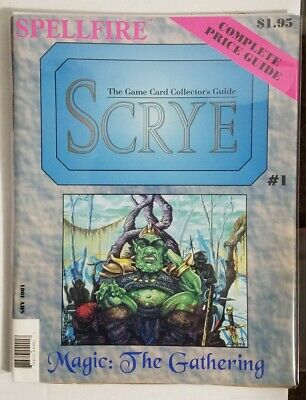
Scrye Magazine
As players began to realize there were different card rarities for Magic cards, it became necessary to understand how to value cards for trading. Enter price guides, of which Scrye was the first. Published monthly starting in May 1994, Scrye included a price guide for every printed card in Magic, plus a look at retailer costs and activity across the country.
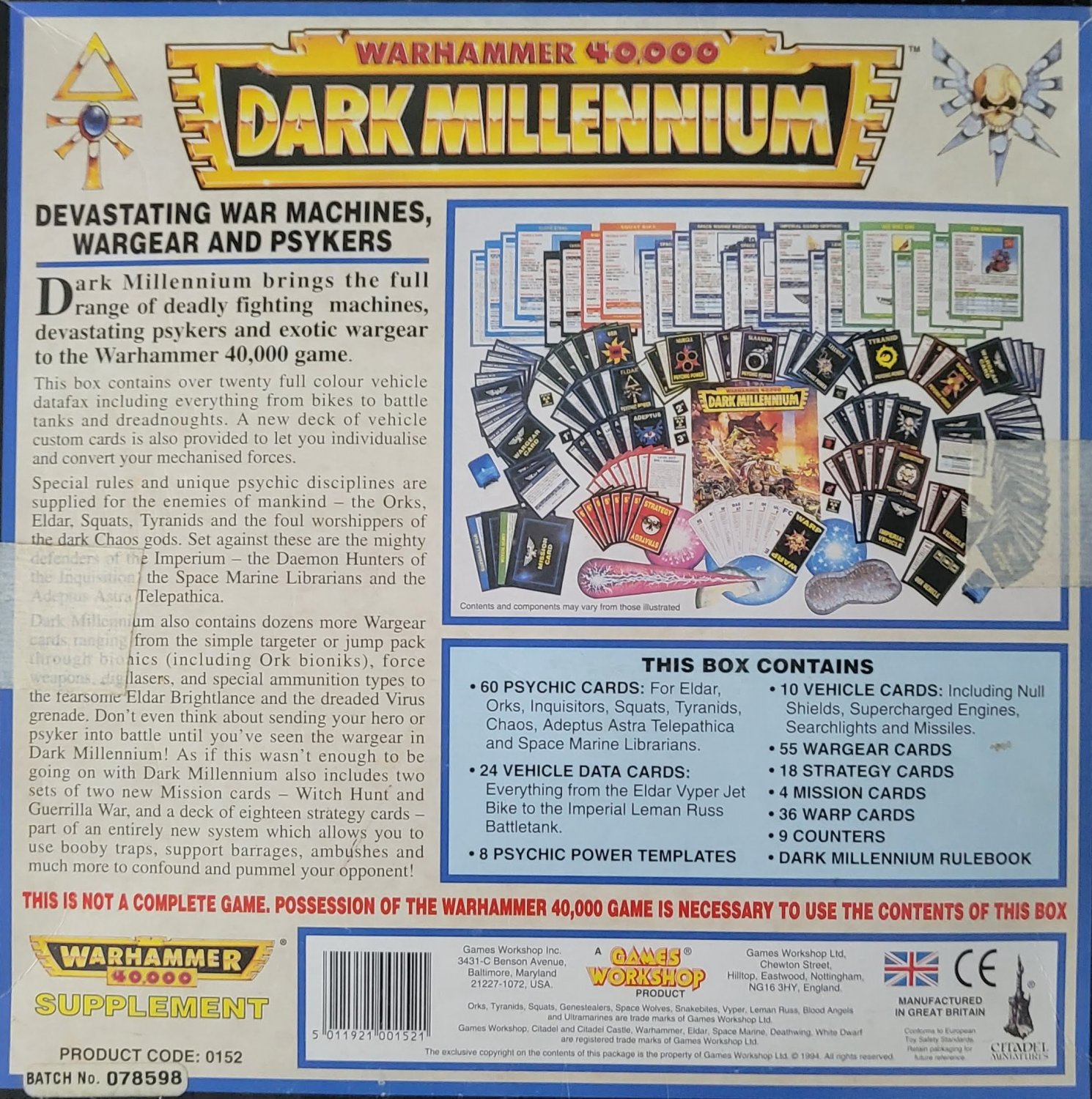
Warhammer 40,000 Dark Millennium
The first major expansion to Warhammer 40,000’s second edition, Dark Millennium added a number of key mechanics to the game, including the Psychic phase and psychic disciplines and a warp charge system, new wargear, and Stratagem Cards to influence games. Dark Millennium was sold as an add-on for the game but was basically the default way to play and its mechanics would be brought back for the game’s 6th and 7th edition releases. When I started playing Warhammer 40k in ’96 you basically had to have this expansion to play the game.
Nintendo Wins the Console War
While Sega was devoting the bulk of its resources to the Sega CD, 32X, and Saturn, Nintendo was going full bore on the Super Nintendo, and the company and its exclusive third-party developers were churning out classic after classic. Many of the console’s best games released across 1994 and 1995 – especially in US, where some of the late 1993 releases like Mega Man X, Breath of Fire, Super Punch-Out!!, and Illusion of Gaia, and in addition to being all-timers they’re some of the best-aging titles from the 90s thanks to being the pinnacle of 16-bit sprite graphics (as opposed to the first generation of 3d graphics).

Super Metroid
Super Metroid is one of the greatest games of all time. It’s not the first Metroid game but it’s the best game in the series, and it single-handedly redefined the 2D adventure genre with an emphasis on exploration, platforming, power-up collection, and nonlinear gameplay. The game is a beloved classic and for years was the defining game to top off Games Done Quick marathons, with millions of dollars raised toward the goal of either saving or killing the animals in the game’s final seconds. The biggest tragedy of the nineties is that the game didn’t sell particularly well, arriving a little too late in the US to hit the kinds of numbers Nintendo was hoping for.

Donkey Kong Country
Ever since getting their butts kicked by Sega’s port of Disney’s Aladdin in 1993, Nintendo had been looking for a way to top its graphics. They’d end up finding their solution by partnering with a British developer named Rare, who worked with the company on an update of its classic Donkey Kong franchise. The result was Donkey Kong Country, a 2D side-scrolling platformer featuring digitized sprites of 3D rendered graphics built on Silicon Graphics workstations. The game looked great and played better, and helped Nintendo really show off the Super Nintendo’s graphics power while also making a compelling case that you didn’t need a 32-bit add-on to get amazing graphics. Donkey Kong Country is a fantastic game which somehow managed to live up to an insane amount of hype from Nintendo’s huge marketing campaign.

Final Fantasy VI
The hits from Nintendo just keep on hitting. Considered by many older players to be the series’ apex, Final Fantasy VI (Final Fantasy III in the US) dropped players into an epic story about a war between humans and monsters called espers in a sweeping story that asks “what happens after the world ends and what do you fight for?” The massive scope and memorable cast of characters make this game an all-timer, and the gorgeous sprite work is easily the series’ best. As a kid I played this game more than a dozen times, and I’m pretty sure I scoured every inch of it looking for its secrets. There’s a ton of depth to the game and its cast despite the size, and the game’s open-ended second half really lets players choose how they want to tackle things. The game’s soundtrack is phenomenal and almost all of its story beats hit.
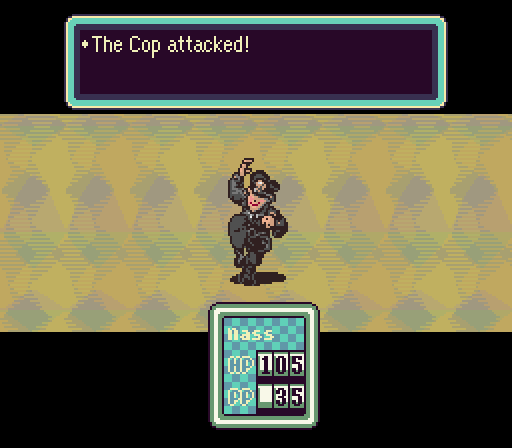
Earthbound / Mother 2
Earthbound (Mother 2 in Japan) is the poster child for cult classics in video games. A quirky role-playing game about a boy with psychic powers named Ness and his battle with three friends against an alien evil, Earthbound is as charming as games get. It’s broadly set in something resembling modern America and features enemies like New Age Retro Hippies, Runaway Taxi Cabs, Bigfoot, and regular cops. The game is one of the all-time greats, with a story that’s equal parts hilarious and heart-rending. It never sold all that well but you can see its fingerprints all over modern games like Undertale, Sea of Stars, and Eastward.
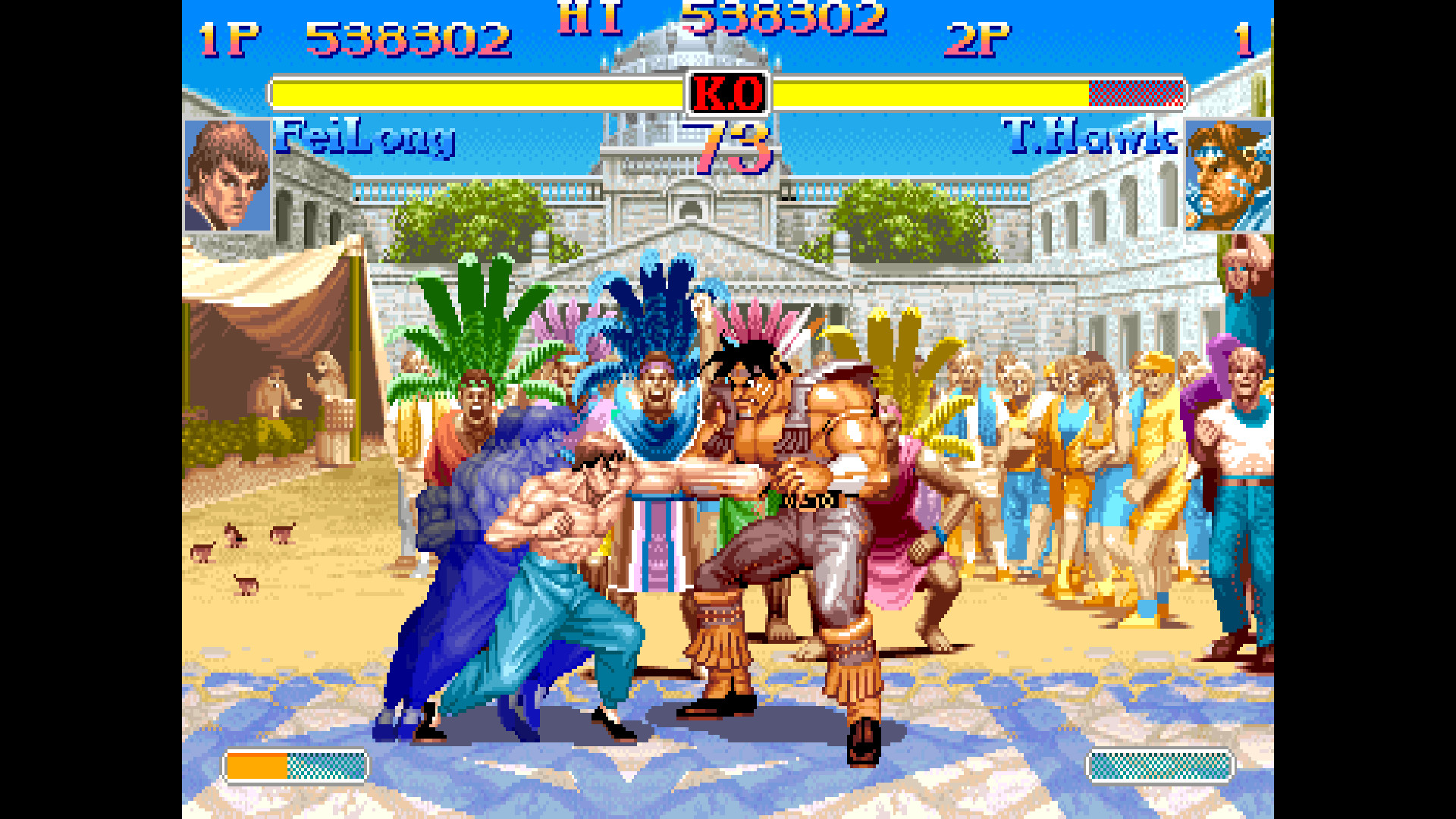
Super Street Fighter II Turbo
Capcom released the final form of Street Fighter II in February, 1994. The game featured the same updated graphics and new characters as Super Street Fighter II, plus faster gameplay, the addition of super moves, and a hidden boss, Akuma. Super Turbo would continue to see play at tournaments more than a decade later. It’s the ultimate form of Street Fighter II, and the game which made super moves a staple in fighting games.
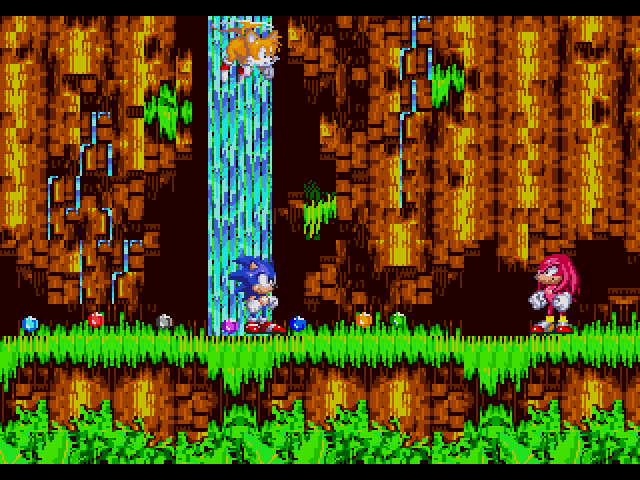
Sonic 3 & Knuckles
Just because the focus was on new hardware didn’t mean Sega didn’t still have something left in the tank for the Genesis. Sonic 3 and Sonic & Knuckles were originally intended to be one game, but when that game got too large during development they split it into two games, putting the latter on a special expansion cart which could be combined with Sonic 3 to make the full game. Both games are great on their own but together Sonic 3 & Knuckles is a masterpiece, telling a full story across three characters and two games. The original game also features an all-timer soundtrack, and the story of Sega’s partnership with Michael Jackson and the Sonic tracks that followed is worth a listen.
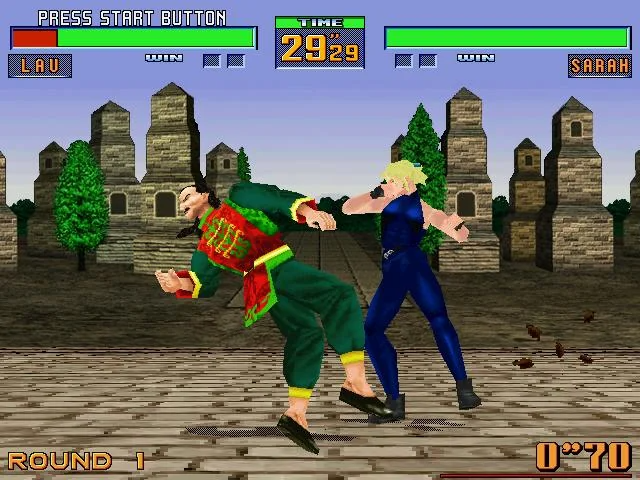
Virtua Fighter 2
Sega released the sequel to its hit arcade fighter in 1994, cleaning up the graphics from the first game with texture mapping and tightening up the mechanics. Virtua Fighter 2 was a huge hit at arcades and was a major step toward the series’ evolution into a highly technical fighting game.

Daytona USA
Possibly the most famous arcade racer ever made, Sega’s Daytona USA debuted in arcades in March 1994 and immediately blew away the competition, topping sales charts in ‘94 and ‘95. In similar fashion to Virtua Fighter 2, the game added texture mapping to its graphics and dramatically improved on Virtua Racing’s visuals. The game was a blast to play and was the first game to use the Sega Model 2 arcade system board.

Tekken
Namco brought its 3D fighting game to arcades in 1994, but it would really pick up steam after being ported to the PlayStation the following year. Tekken had 8 fighters, offered eight-way movement, and largely removed projectiles and more fantastic elements in favor of a more grounded, grappling-heavy play style. The game was reasonably popular in arcades but would go on to be a huge hit on home consoles.
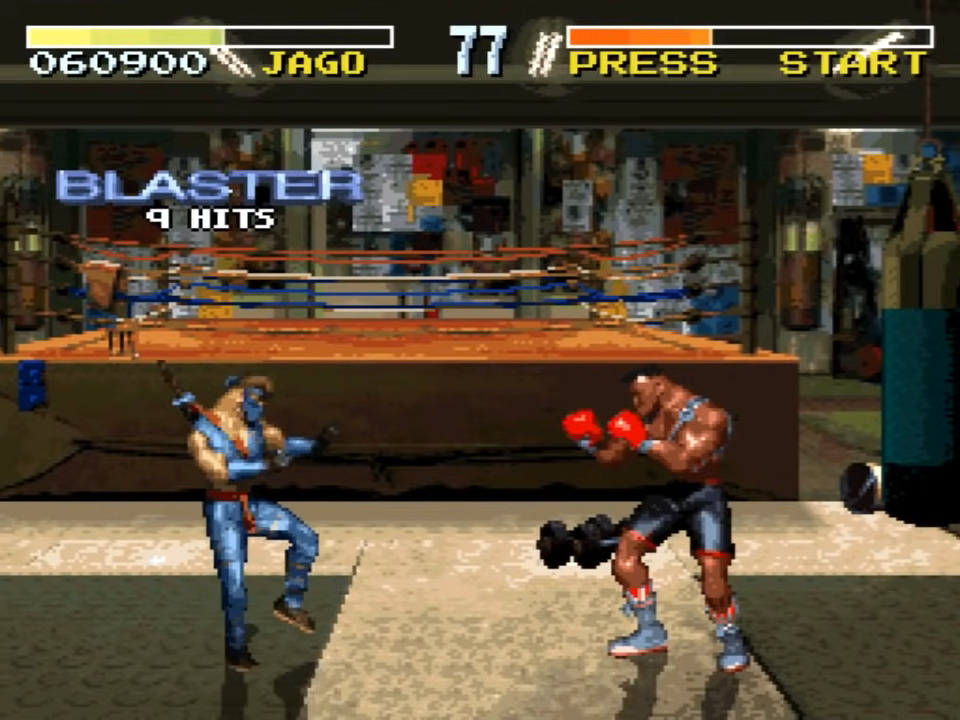
Killer Instinct
Rare was busy in 1994, not just working on Donkey Kong Country but also this mostly 2D fighting game featuring digitized sprites of 3D models rendered on Silicon Graphics workstations. The game featured a number of fantastic characters, including the cyborg Kilgore as its mascot, and emphasized long combo attacks and counters. The game also featured finishing moves, though these tended to be less brutal than Mortal Kombat’s.
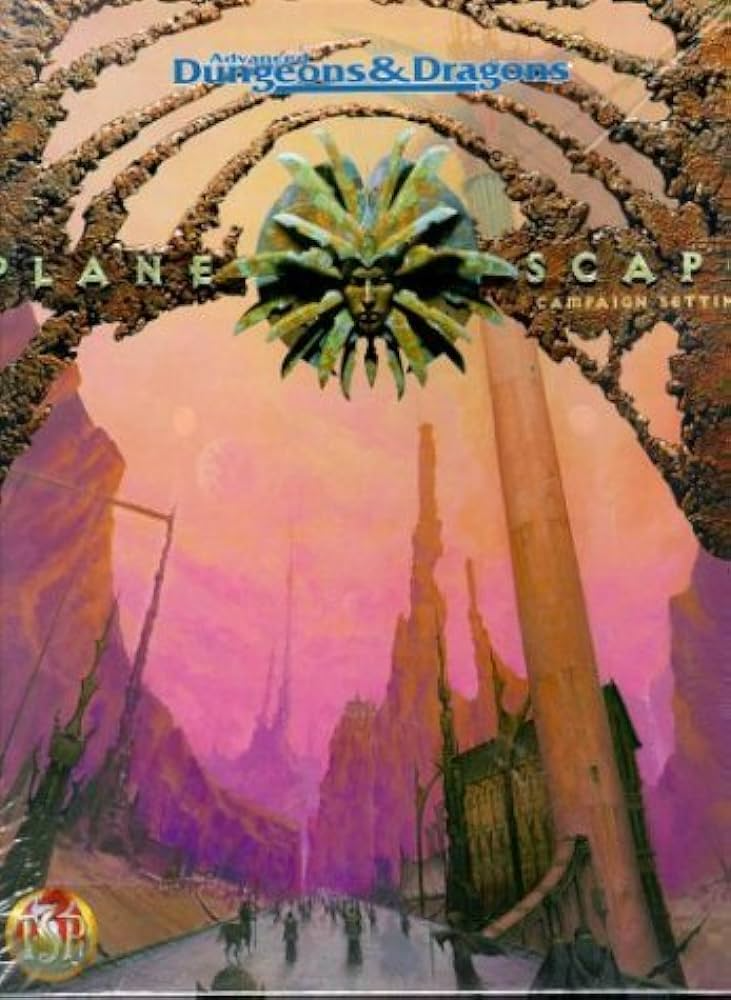
Planescape
In 1994 TSR introduced us to Sigil, the City of Doors in this expansion for Advanced Dungeons & Dragons Second Edition. The general idea was to create a campaign setting in which characters could visit many different planes and the result was a plane which acted as the center for all the planes, ruled over by the Lady of Pain. Planescape is one of the most popular and evocative settings for D&D and would go on to be the setting for Planescape: Torment.

System Shock
One of the original immersive sims, System Shock was released in 1994 for the PC and Mac. Though it’s a very rough game by today’s standards, the original System Shock is chock full of ideas which would later be adopted and built on by other games like its sequel and Deus Ex. It’s more interesting conceptually than fun to play, but its main villain, the murderous AI Shodan, earned her outsized legacy. System Shock’s producer, Warren Spector, would eventually go on to work on some of the most beloved games of all time.

Bust-A-Move/Puzzle Bobble
Though not as grand in scope as other games on this list, Taito’s 1994 puzzle game Bust-A-Move created the bubble shooter genre of games. Its addictive gameplay and outstanding VS. mode give it a timeless feel that many other games from the era lack. Bust-A-Move is a game I can always pick up and play whenever I see an arcade machine for it.
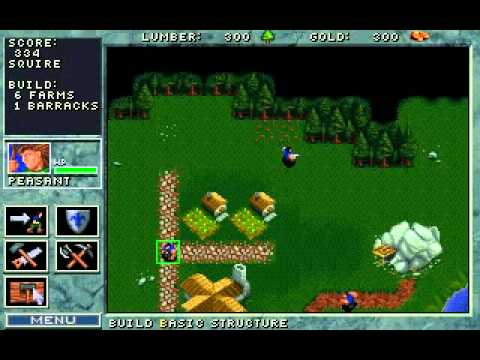
WarCraft: Orcs & Humans
Blizzard launched its first real-time strategy game in 1994 for the PC. The game introduced the classic WarCraft/StarCraft formula of base building, resource gathering, and base destruction which would captivate the world years later, and its player-vs-player gameplay was good enough to make multiplayer a staple of future RTS games moving forward. WarCraft isn’t Blizzard’s best game, but it’s one of the most important games ever made for a number of reasons.
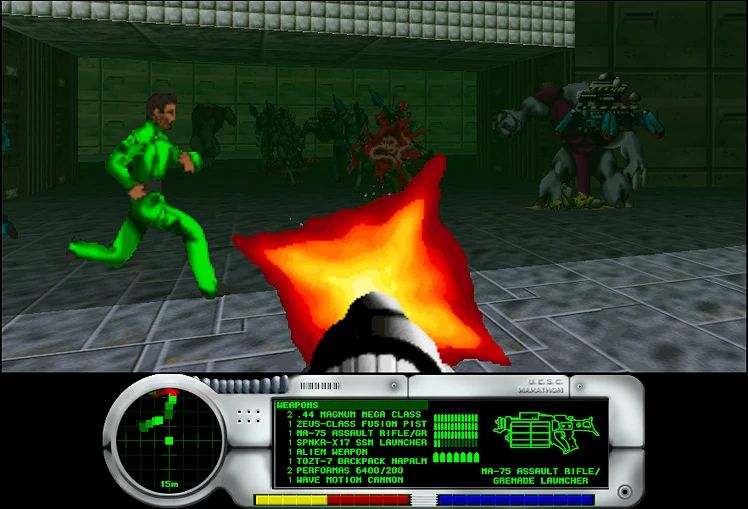
Marathon
Togepi: 1994 also saw a little-known studio called Bungie put out a first person shooter called Marathon. Compared to the previous year’s Doom, Marathon was bizarre: its levels were cavernous and echoing, dark and mostly empty, with the alien Pfhor scratching and burbling at the edges of hearing. The game was slower-paced, with an unusually deep and rich story, which unfolded in a series of terminals. The player, the security officer of the UESC Marathon, started off trying to defend the ship from alien slavers, but rapidly became a pawn in a struggle between the aliens and a trio of hyperintelligent AIs: the dutiful Leela, the malevolent Tycho and the scheming, self-interested Durandal.
The gameplay is great, pushing the limits of what the technology of the time could achieve, but Marathon’s story really sets it apart. Across three games (Marathon, the 1995 sequel Marathon: Durandal, and 1996’s Marathon Infinity), the series explored the nature of consciousness, freedom, the end of the universe, and the purpose of life. Durandal is one of the great all-time characters, made better by the fact that you can never interact with him except by reading his messages in the ubiquitous terminals. Marathon laid the groundwork for the later Halo and Destiny and introduced concepts that would recur in later games, like “rampancy” and the theme of AI-as-manipulator.
The Marathon trilogy is available today as freeware and well worth a download. It’s a classic, and with Bungie apparently poised to reboot the IP as an extraction shooter, you should go back and check out the original.
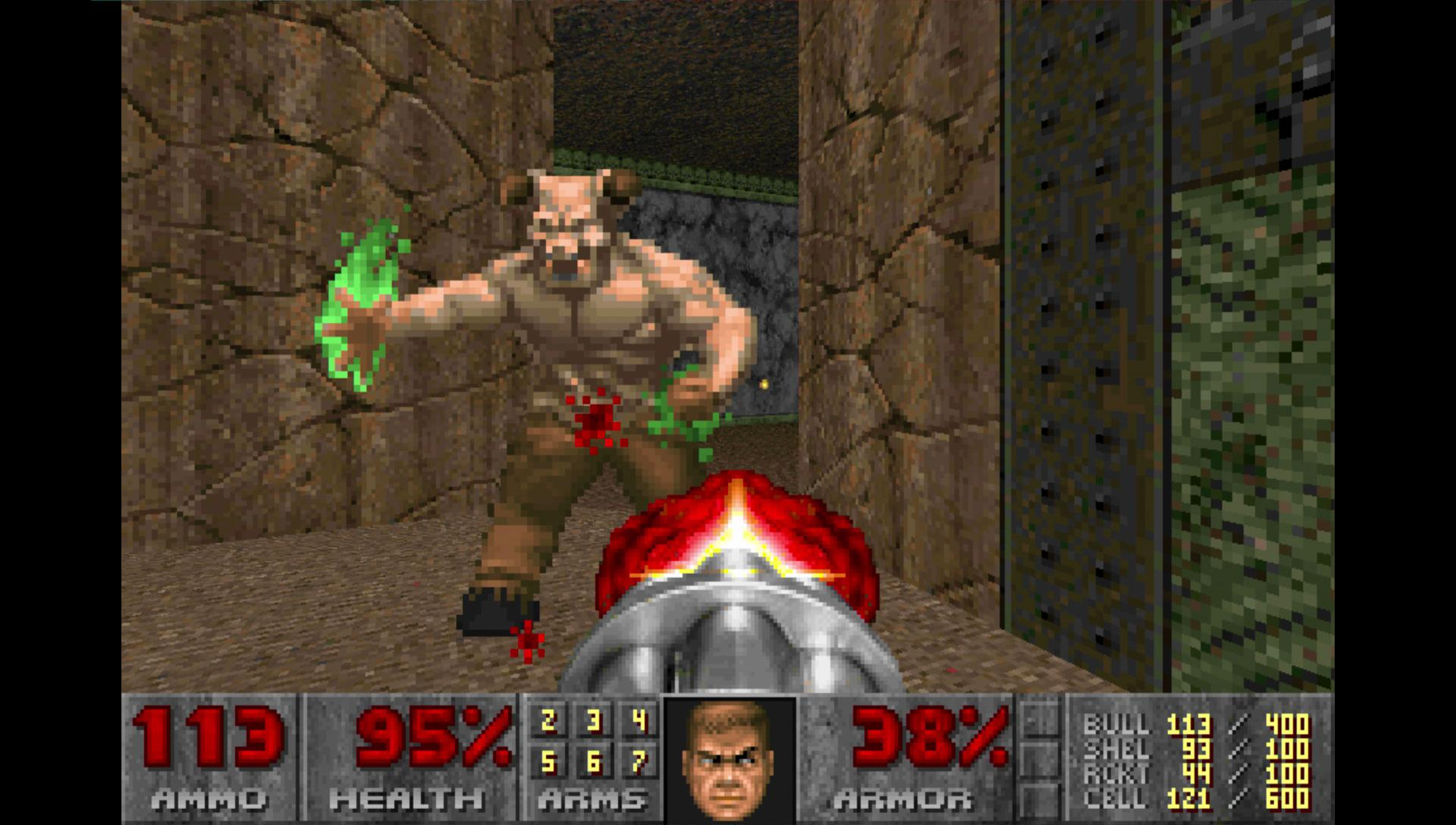
Doom 2
Id Software released its follow-up to Doom on the PC in 1994, giving us more monsters, bigger levels, and more weapons and power-ups. The game engine was basically the same as Doom, but better hardware meant the devs could do more with it, and Doom II is just a tighter, more satisfying play experience. It also had a very playable multiplayer mode, something the first game didn’t really have – that multiplayer would create the template for FPS multiplayer for decades to come.

Blood Bowl Third Edition
Modern Blood Bowl really came together in this third edition release in 1994, establishing the simpler, turnover-based gameplay that defines the modern game. This is also when the game got an overhaul with a new set of minis, pitting plastic Orks vs. Humans and really tying the game to the Warhammer Fantasy Old World. This is more or less the game we all know and love today, and one of the tightest games Games Workshop ever made. This was my entry into the series, and it’s a game I still love dearly.
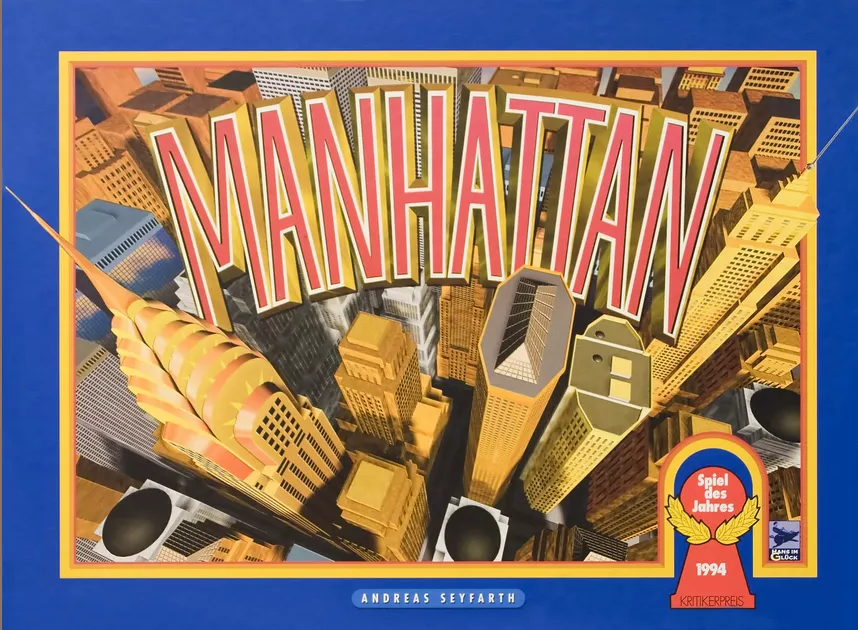
Manhattan
Are you ready for the ruthless, backstabbing world of high finance and skyscraper building? No? Fine, how about a dynamic tactical game of putting pretty plastic pieces on top of one another to claim as many stacks as you can? While the theme of the game is weak, the somewhat abstract gameplay is not and there is a lot of fun in this game, the 1994 Spiel des Jahres winner.
Why It Was the Best Year in Gaming
I mean holy shit look at that list. You could easily make the case that 1994 was the best year for the Super Nintendo, and there were several very strong entries we didn’t mention, such as Demon’s Crest, Live A Live, Breath of Fire II, and Super Bomberman 2 also being released. Likewise, the Genesis had some really great titles of its own outside of Sonic – Castlevania: Bloodlines, Beyond Oasis, Streets of Rage 3, and Ecco: The Tides of Time were all very solid entries. And on PC you had some truly legendary games with System Shock, WarCraft, Doom 2, TIE Fighter, The Elder Scrolls: Arena, Marathon, and X-COM: UFO Defense.
On the tabletop, Magic really established itself as the future king of collectible card games, knocking it out of the park with three straight expansions before slowing a bit with Fallen Empires. They had their competitors that year, with TSR’s Spellfire, Decipher’s Star Trek Customizable Card Game, and White Wolf’s Vampire: the Eternal Struggle (unfortunately named Jyhad at the time) releasing as strong competitors. Dark Millennium redefined the way players played Warhammer 40,000 and set things up for the rest of the edition. RoboRally and Manhattan were both solid board game entries, third edition Blood Bowl remade the game into what it is today, and Planescape added a whole new, distinct setting for players to explore in D&D campaigns.
This article is part of a larger series on the best year in gaming. For more years, click this link. Have any questions or feedback? Drop us a note in the comments below or email us at contact@goonhammer.com.
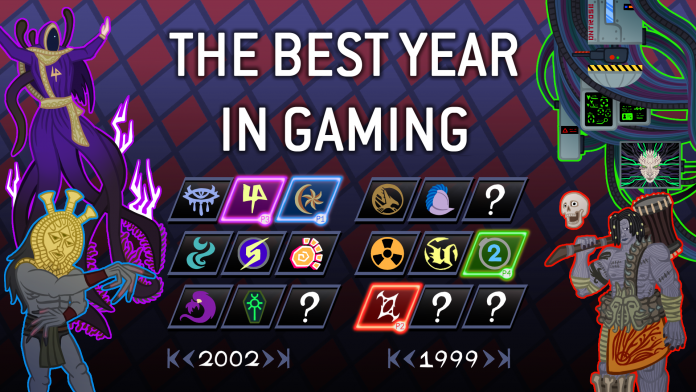


You must be logged in to post a comment.